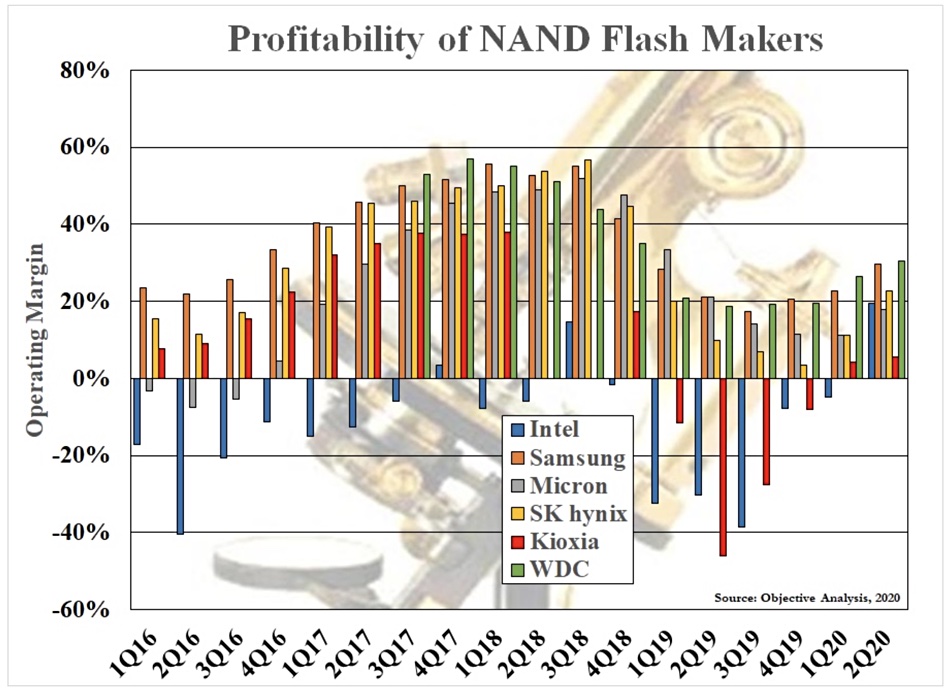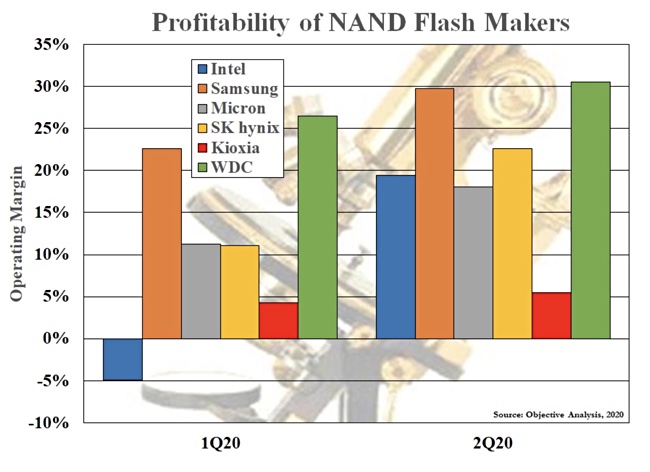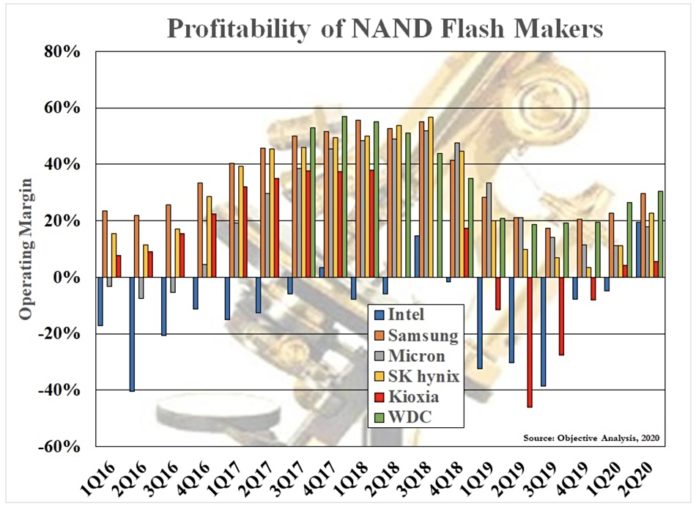Intel may have reached breakeven point or better with Optane storage-class memory products. So says the tech analyst Jim Handy, of Objective Analysis, who basing this observation on Intel’s second 2020 quarter earnings.
Intel’s Non-volatile Solution Group makes the firm’s NAND and Optane 3D XPoint products and Handy has tracked its profitability along with other NAND suppliers over the past few quarters.
Here’s a chart from his Aug 14 “Did 3D XPoint Costs Reach Break-Even?” alert;:

Intel’s NSG profitability has been negative apart from three quarters – 4Q17, 3Q18 and 2Q20. So how come the latest quarter reversed six consecutive quarters of losses?
Handy attributes thoe losses to Intel Optane activities. “Intel was profiting from its NAND flash business as much as its peers,” he writes, “but the 3D XPoint Optane effort was sucking all of those profits out of the business, and more, to cause losses.”
He charts the 1Q20 and 2Q20 quarters separately;

Handy notes: “In the second quarter of 2020, Intel’s NSG posted a profit of $322 million, giving it an operating margin of 19 per cent. This is close to the operating margins of the other companies in the chart.”
He concludes: “Since Intel’s NSG margin is now comparable to its peers, then it’s reasonable to assume that the group’s NAND profits are no longer being offset by Optane losses.”
That’s because, he argues, Intel’s Optane manufacturing has scaled up and the cost is spread over a larger number of Optane devices. This makes the per-device manufacturing cost low enough that Intel can sell Optane devices overall at near-break-even or better pricing.
“The economies of scale have allowed Intel to finally reach the break-even point, and from now on Optane is likely to either continue to break even or to make a profit,” he concludes. “This is enormously important if the company ever wants to spin off the Optane business.”
He thinks a spin-off “seems very likely since Intel has exited nearly every memory business it has participated in since its founding: SRAM, DRAM, EPROM, EEPROM, NOR flash, Bubble Memories, and PCM. The only two left are NAND flash and 3D XPoint.”
Intel is currently buying in Optane dies from ex-manufacturing partner Micron. Is a spin-off likely? Intel is moving into various CPU adjacencies such as FPGAs, and today classes itself as a maker of “silicon and software [which] are essential for moving, storing, and processing data faster and more securely than ever before.” Keeping NAND in the portfolio is no bad thing.








